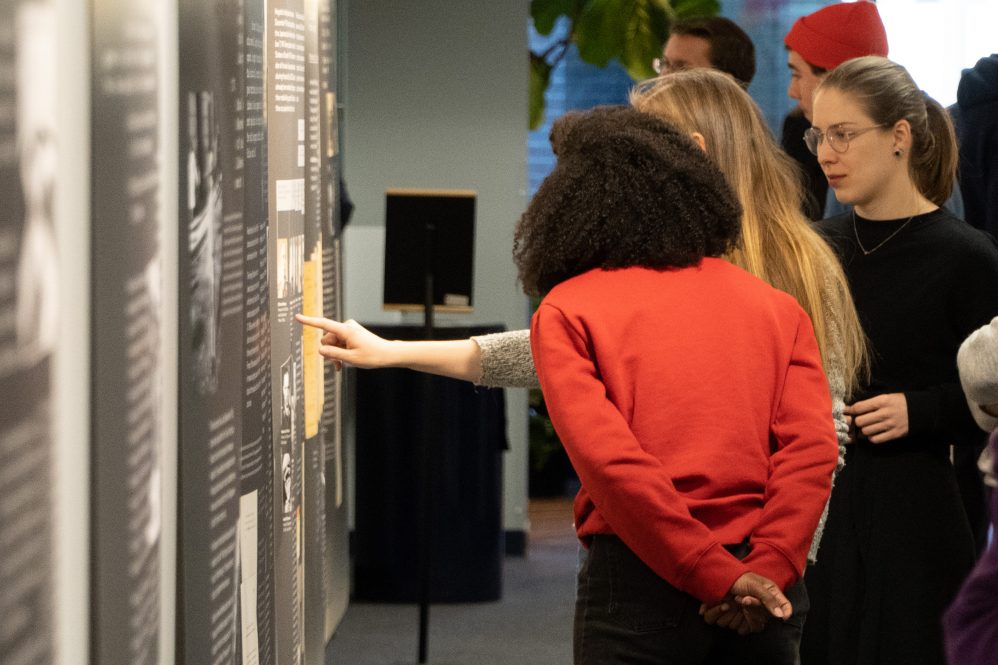“People were aware of one thing… They will not come back.”
Those words were spoken by Dr. Matthias Hass, the curator of the traveling exhibition “The Wannsee Conference and the persecution and murder of the European Jews” that opened Monday March 2 at the Thomas J. Dodd Research Center.
He was referring to the countless people who watched their neighbors be dragged away from their homes at all times of the day after the Wannsee Conference. The conference took place in Berlin on January 20, 1942, where 15 high-ranking Nazi Party and German Government officials gathered to discuss what they called the “Final Solution” of the Jewish civilians. It was simply code for the mass execution of millions of innocent people, Hass explained to the 40 people in attendance.
 The 13 Protocols from the conference can be seen hanging on the walls of the Dodd Center. The language was kept vague with terms like “suitable treatment” and “resettlement” used in place of “death” to gain cooperation of German citizens and even foreign police forces.
The 13 Protocols from the conference can be seen hanging on the walls of the Dodd Center. The language was kept vague with terms like “suitable treatment” and “resettlement” used in place of “death” to gain cooperation of German citizens and even foreign police forces.
“They did not see anything wrong. That was the excuse of many people after the war,” Hass explained.
The Dodd Center is proud to host the exhibit with the efforts of Lisa Workmeister Rozas, UConn’s Bachelors of Social Work (BSW) Program Director, making it possible.
Werkmeister teaches a course called Germany Travel Study: Implications of the Holocaust for Social Worker Practitioners. The three German and two UConn students in the program said they felt fortunate to be able to attend the opening and learn different perspectives about the Holocaust throughout their time in the program.
The program offers American and German students a chance to exchange perspectives on their history and times of oppression said Nina Tillenburg, a Masters student from the University of Merseburg, who is part of the Germany Travel Study program.
“There’s always a possibility to learn more from other cultures and how they deal with what the culture’s all about. So I think it’s important to talk about it and get a new perspective out of it,” Tillenburg said.
Emily Duszlak, a MSW student at Uconn, said she felt the collaboration between schools and countries is an important opportunity for learning and exchanging ideas.
“I’m looking forward to gaining a broader perspective of what other countries do in regards to social work, especially after they have a history of human rights abuses. It’s just really fascinating,” Duszlak said.
The exhibit opened to the public on March 2, 2020 and will remain on display at the Dodd Center through April 29, 2020. The event was hosted by the Thomas J. Dodd Research Center, Center for Judaic Studies and Contemporary Jewish Life and the School of Social Work.



